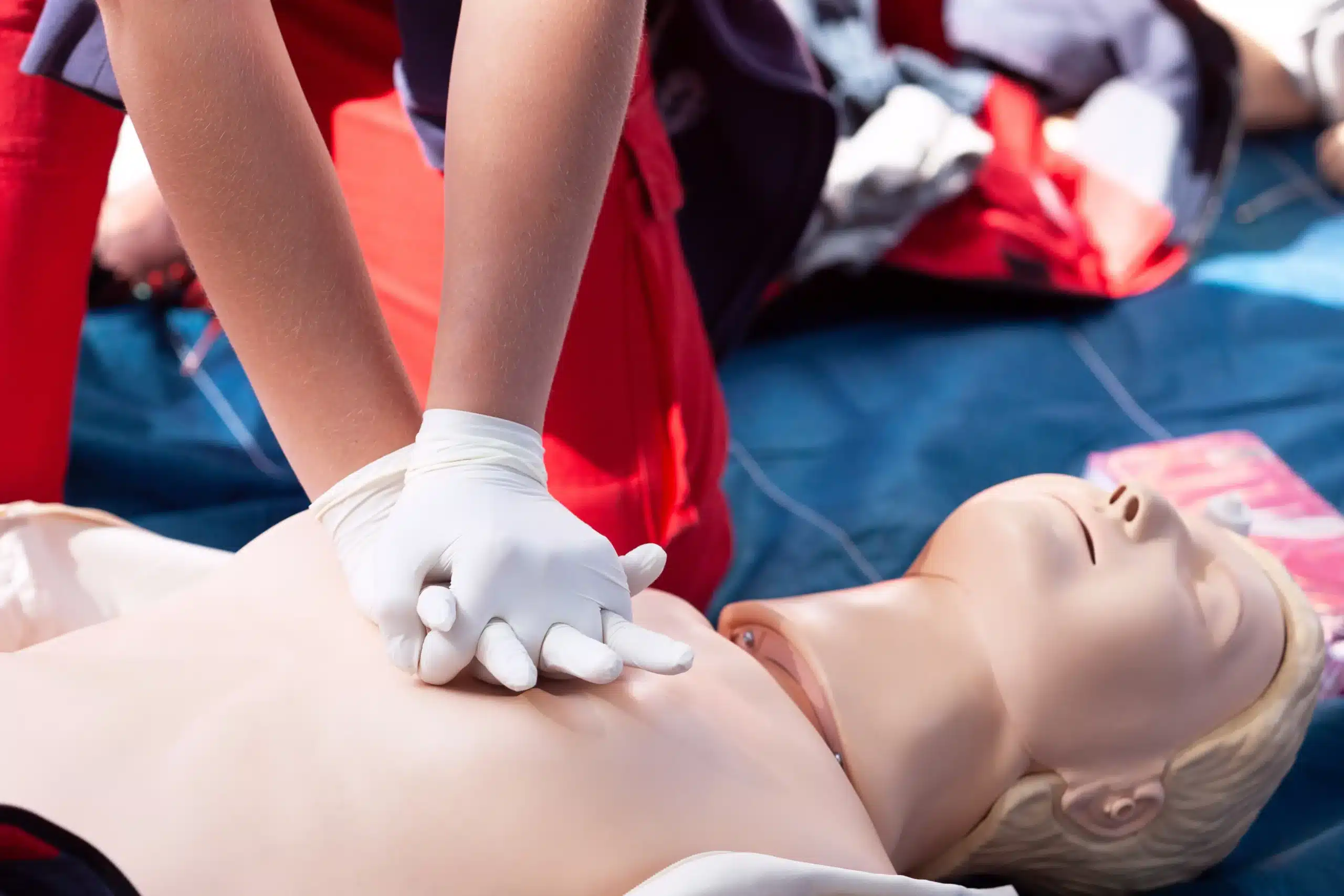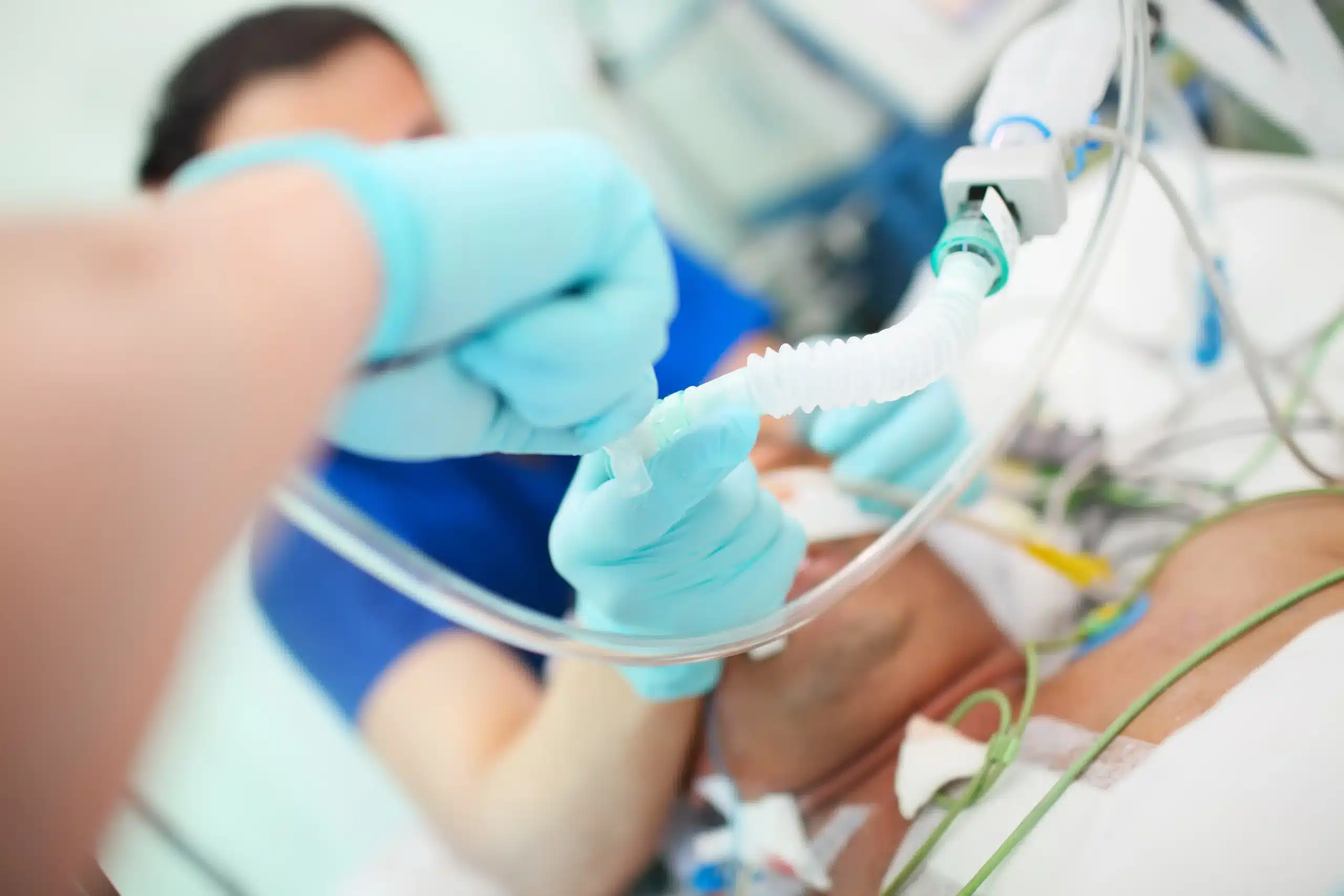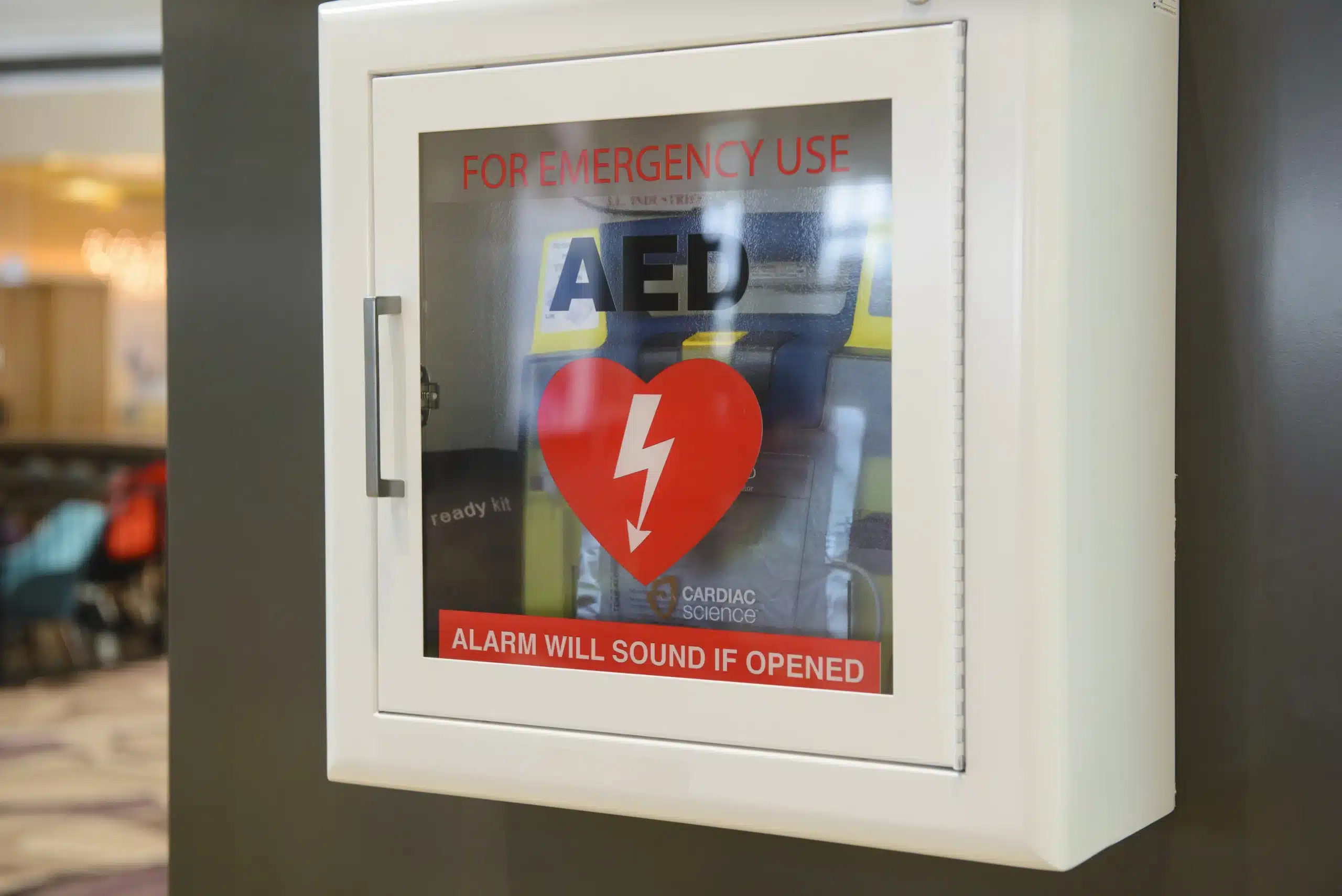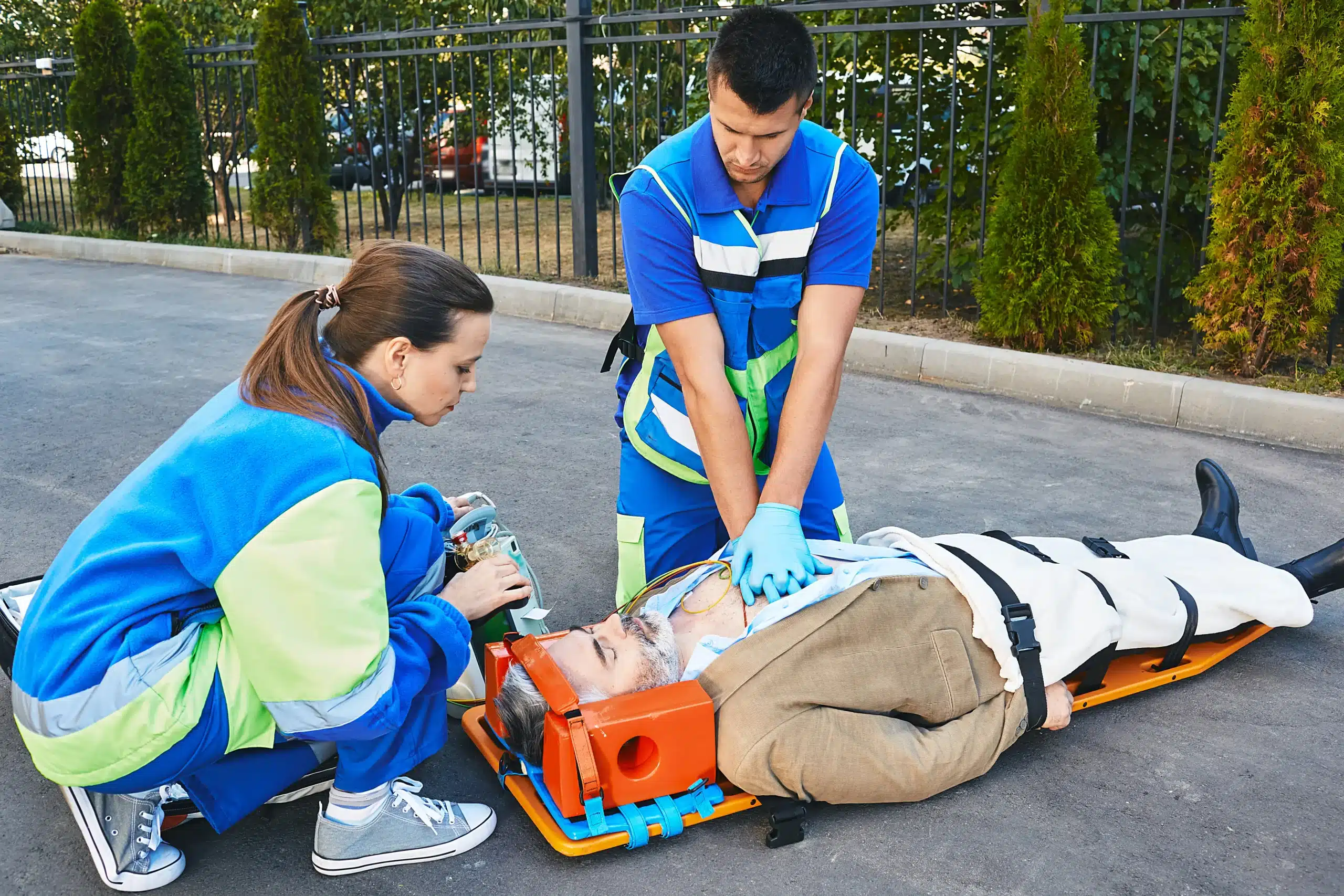Empowering yourself with CPR skills can make you a valuable asset in any community. Whether you’re a parent, a teacher, a coach, or simply someone who wants to be prepared for the unexpected, knowing CPR can make a world of difference. This guide will help you understand the different levels of CPR training, from basic to advanced, and how to find CPR courses near me that fit your needs. We’ll also explore specialized CPR courses for various professions and discuss the pros and cons of online and in-person learning. Let’s equip you with the knowledge and confidence to respond effectively in emergencies.
Key Takeaways
- Find the right CPR course type: Explore options like online, in-person, and blended learning. Consider basic, advanced, or specialized CPR training based on your needs. Confirm instructor qualifications and provider credentials.
- Locate convenient training: Search online resources like the American Red Cross and American Heart Association. Check local hospitals, community colleges, and training centers such as Safety Training Seminars. Look for accredited providers and read reviews.
- Choose a course that suits you: Balance cost, time commitment, and certification requirements with your learning style. Online courses offer flexibility, while in-person training provides hands-on practice.
What are My CPR Course Options?
Choosing the right CPR course depends on your individual needs and learning style. Let’s explore the different types of courses, skill levels, and specialized training available.
CPR Course Types
CPR courses come in several formats. Online courses offer flexibility, letting you learn at your own pace and on your own schedule. In-person classes provide a structured environment with hands-on practice and direct feedback from certified instructors. For a blend of both, consider a blended learning format, which combines online coursework with an in-person skills session. When choosing a course, it’s important to check the instructors’ qualifications and the training provider’s credentials. Select a reputable provider to ensure a high-quality learning experience.
Basic vs. Advanced CPR
CPR training caters to different skill levels. Basic CPR courses teach fundamental life-saving techniques, including chest compressions, rescue breaths, and recognizing the signs of a heart attack or stroke. These courses are suitable for the general public and anyone wanting to learn these essential skills. Advanced courses, such as ACLS (Advanced Cardiovascular Life Support) and PALS (Pediatric Advanced Life Support), delve into more complex medical emergencies. These are typically for healthcare providers, paramedics, and emergency responders. The time commitment varies depending on the course level. A basic CPR class might take a few hours, while advanced certifications require a more substantial time investment. Consider your current skill level and career goals when deciding which type of training is right for you.
Specialized CPR Courses
In addition to basic and advanced CPR, specialized courses are designed for specific professions and settings. The Red Cross offers specialized programs for schools and healthcare providers, addressing the particular needs of those environments. You can also find CPR training tailored to childcare providers, lifeguards, and other professions where CPR knowledge is critical. Look for local CPR classes that fit your schedule and learning preferences. These classes offer hands-on training and the chance to connect with certified instructors in your area.
How Do I Find Local CPR Training?
Finding the right CPR class can feel overwhelming, but it doesn’t have to be. Start by considering accreditation, reviews, and available training options near you.
Find Accredited Providers
First things first: make sure any training you consider is accredited by a recognized organization. Look for providers affiliated with the American Heart Association (AHA), the American Red Cross, the National Safety Council, or other reputable certifying bodies. This ensures the training meets nationally recognized standards and will be accepted by most employers.
Check Reviews and Testimonials
Before committing to a class, check online reviews and testimonials. Real student feedback offers valuable insights into the quality of instruction, the instructors’ expertise, and how well the course prepares students for real-life emergencies. Positive reviews can give you confidence you’re choosing a worthwhile course.
Local CPR Training Options
Finding a convenient local CPR class is easier than you think. Here are a few places to start your search:
Safety Training Seminars
Safety Training Seminars offers comprehensive CPR and first-aid training in San Mateo and over 60 other cities. They provide various courses, including BLS, ACLS, PALS, CPR, and First Aid, as well as RQI programs for healthcare professionals. They’re known for excellent customer service and a low price guarantee. The San Mateo location serves San Mateo, Daly City, and Millbrae, CA. You can find more information on their BLS, ACLS, and CPR/First Aid courses on their website.
American Red Cross
The American Red Cross website has a handy search tool to help you find CPR and AED certification classes near you. They offer various courses for different needs and experience levels.
American Heart Association
The American Heart Association also provides resources to locate CPR training courses in your area. Their website allows you to search for certified instructors and training centers offering various AHA courses.
Local Hospitals and Medical Centers
Many hospitals and medical centers offer CPR training courses to the public. Check the websites of hospitals in your area or contact their education departments for more information.
Community Colleges
Community colleges often include CPR training as part of their continuing education programs. These courses are often affordable and accessible, making them a great option for many.
Online vs. In-Person CPR Training: What’s Best for Me?
Choosing between online and in-person CPR training depends on your learning style, schedule, and budget. Both options offer valuable skills, but they differ in their approach and benefits. Let’s break down the pros and cons of each to help you decide what’s right for you.
Online Course Pros and Cons
Online CPR training offers unparalleled flexibility. You can learn at your own pace, fitting the coursework around your busy schedule and completing modules whenever and wherever you have time. This makes online learning a great option if you’re juggling work, family, or other commitments. Plus, online courses are often more budget-friendly than in-person classes.
However, online training typically lacks the hands-on practice crucial for mastering CPR techniques. While some programs incorporate videos and simulations, they can’t fully replicate the experience of performing CPR on a manikin with an instructor. This can be a significant drawback, especially for those with little to no prior experience. If you learn best by doing, in-person training might be a better fit.
Benefits of Hands-On Training
In-person CPR training provides a structured learning environment with real-time feedback from certified instructors. You’ll practice your skills on a manikin, ask questions, and receive personalized guidance, which can significantly improve your confidence and competence. This hands-on experience is invaluable for developing muscle memory and mastering the correct techniques. The interactive nature of in-person classes also allows you to learn from your classmates and connect with other people interested in CPR. This can create a supportive learning environment.
While in-person training offers a richer learning experience, it does come at a higher cost and requires a greater time commitment. Attending scheduled classes may not be feasible for everyone.
Employer-Accepted Certifications
Regardless of whether you choose online or in-person training, make sure the program offers a nationally recognized certification accepted by your employer or licensing organization. Many employers require healthcare providers, childcare workers, and other professionals to hold current CPR certification from an accredited provider like the American Heart Association or the American Red Cross. Always verify the certification requirements for your specific profession or workplace before enrolling in a course. Safety Training Seminars offers a variety of certification courses, including BLS, ACLS, and CPR/First Aid, all compliant with employer standards. We also offer convenient RQI programs for healthcare professionals seeking certification card renewal. Check out our low price guarantee for the best value on CPR training.
How Do I Choose the Right CPR Course?
Picking the right CPR course depends on several factors. Think about your budget, available time, and the type of certification you need. Let’s break it down to make the decision easier.
Costs & Discounts
CPR course costs vary. Often, reputable organizations charge a little more because of their recognized certifications and high-quality instruction. Check if a provider offers discounts for students, seniors, or groups. Safety Training Seminars offers a low price guarantee, so you can feel confident you’re getting a great deal.
Time Commitment & Scheduling
Your schedule plays a big role when choosing a CPR class. Some courses can be completed in a single day, while others are spread out over a few weeks. Think about what works best for you. Also, consider the course format. Do you learn best in a traditional classroom or would you prefer the flexibility of an online course?
Certification Duration & Renewal
CPR certifications expire. Most are valid for about two years, but this can vary based on the certifying organization. Online CPR certifications have similar renewal requirements. Make sure you understand these requirements before you sign up. Knowing this information upfront helps you stay current on your certification.
Choose the Right Course
The best CPR course for you depends on your individual needs and preferences. Online and in-person CPR training each have their own pros and cons. In-person training offers hands-on practice and immediate feedback from an instructor. Online courses offer more flexibility, which can be great for busy schedules. Weigh your options and choose the format that best suits your learning style.
Related Articles
- CPR Courses in Daly City: Find the Right One For You – San Mateo CPR Classes
- CPR Certification Near Me: Your Complete Guide – San Mateo CPR Classes
- CPR Training in Daly City: Your Complete Guide – San Mateo CPR Classes
- Online CPR Classes in Millbrae: Your Complete Guide – San Mateo CPR Classes
- Why CPR is Critical in Healthcare
Frequently Asked Questions
How long is a CPR certification valid for? CPR certifications typically expire after two years, although this can vary depending on the certifying organization (like the American Heart Association or the Red Cross). Check with your specific certifying body or employer for their exact requirements. It’s crucial to renew your certification before it expires to maintain your skills and credentials.
What’s the difference between BLS and CPR certification? CPR (Cardiopulmonary Resuscitation) focuses on rescuing individuals experiencing cardiac arrest or respiratory emergencies. BLS (Basic Life Support) builds upon CPR, adding essential skills like using an AED (Automated External Defibrillator) and providing basic airway management. BLS certification is often preferred for healthcare providers and professionals in related fields.
Is online CPR certification accepted? Whether online CPR certification is accepted depends on the employer or organization. While online courses offer flexibility, some employers prefer or require in-person training due to the hands-on component. Always check with your employer or licensing board to confirm their specific requirements before enrolling in an online course. Many reputable organizations offer blended learning options that combine online coursework with in-person skills sessions.
How much does CPR certification cost? The cost of CPR certification varies depending on the course type, location, and training provider. Basic CPR courses are generally less expensive than advanced certifications like ACLS or PALS. Look for providers that offer discounts for students, groups, or other eligible individuals. Don’t hesitate to contact different training centers and compare prices to find the best value.
Where can I find CPR classes near me? Several resources can help you find local CPR classes. The American Red Cross and the American Heart Association have websites with search tools to locate certified training centers in your area. Local hospitals, community colleges, and dedicated CPR training providers like Safety Training Seminars also offer courses. Searching online for “CPR classes near me” can also yield helpful results.






